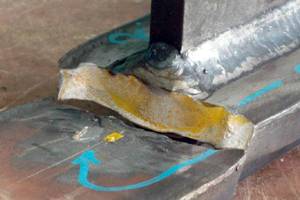LR: New Tool To Assess Vessel Fatigue in Icy Waters
Lloyd's Register (LR) gives shipowners and operators a new tool to help assess designs and reduce the risk of fatigue damage in the hull structures of their ice-strengthened vessels. The development of new procedures under the notation, ShipRight FDA ICE, comes as changes in the exploitation of natural resources, the climate, world trade and marine infrastructure are increasing marine activity in cold-climate areas.
Greater trade through the Arctic is driving demand for larger ice-class vessels, particularly oil tankers and LNG carriers. It is increasingly important that the industry develops a better understanding of the risks involved, including the potential for fatigue to affect the strength of ships' hull structures, according to Dr Shenming Zhang, the project leader and a Lead Specialist in Lloyd’s Register’s Marine Product Development department.
“Designers and owners need to have confidence in the structural performance of the latest generation of large ships. The fatigue performance of these hull structures as the ships navigate in ice-covered waters is a key component in their operational capability and reliability," said Dr Zhang. "This assessment will give operators and owners the confidence to operate in these demanding and challenging environmental conditions."
The Arctic is estimated to hold about 20% of the world’s remaining recoverable hydrocarbon reserves. Further exploration and transportation is expected off the coasts of Alaska, Canada, Greenland and Russia. In addition to hydrocarbons, large quantities of minerals may need to be shipped from the Arctic to ports in Europe and Asia.
The ShipRight FDA ICE assessment procedure examines ship-ice interaction loads, ice-load impact frequency, ice-load distribution, structural responses and the fatigue behaviour of hull structures in cold temperatures including associated fatigue responses. The fatigue-response assessment is determined for different winter conditions and ice thicknesses on typical routes for winter trade.
This new level of comprehensive structural analysis puts greater emphasis on the quality of the design details, particularly in the higher risk regions of the hull.
Fatigue damage is a direct consequence of cyclic stresses and construction standards, with alignment also playing an important part. It can lead to a failure of key structural elements which, in worst-case scenarios, may result in major structural failure.
The procedure provides the measure to identify high-stress locations and to help reduce the risk of structural failure. It was developed from Lloyd’s Register’s extensive experience with ships operating in ice and uses full-scale measurements conducted on ships navigating in ice and is further validated by experimental testing.
Extensive fatigue testing on welded joints of mild and higher tensile steels at low temperature were carried out during the procedure's development.
“The needs of the industry are changing and the development of larger, ice-strengthened vessels is just one example of this. This new procedure extends the boundaries of current fatigue-calculation methods,” said Dr Zhang. “We are committed to reducing the risks to ships, to crews and to the environment. By helping to improve the fatigue performance of the hull, we can increase confidence that vessels will be suitable for trade in cold climates.”
By using a developed methodology on ice-load spectrum, structural stress responses to these loads and the
associated 'S-N curves' (which define the number of stress cycles that are needed to produce a fatigue crack in a structural detail) fatigue damage can be determined for the typical structural details of larger, ice-strengthened ships. The results will identify the fatigue accumulation for different winter conditions and trading routes.
Ships complying with the requirements of the procedure will be eligible to be assigned the notation ShipRight FDA ICE.














